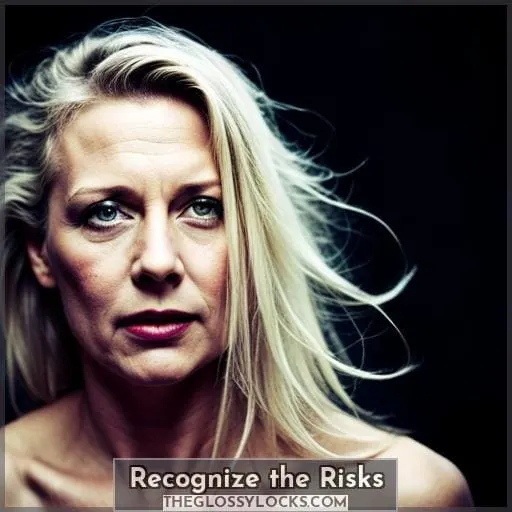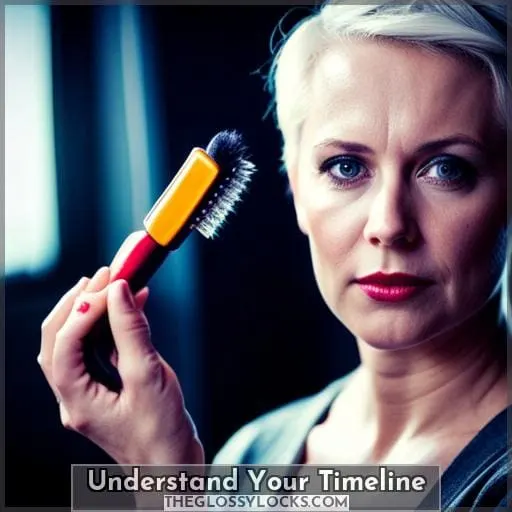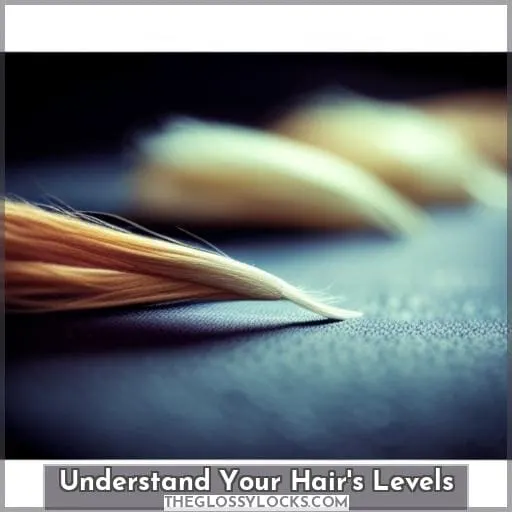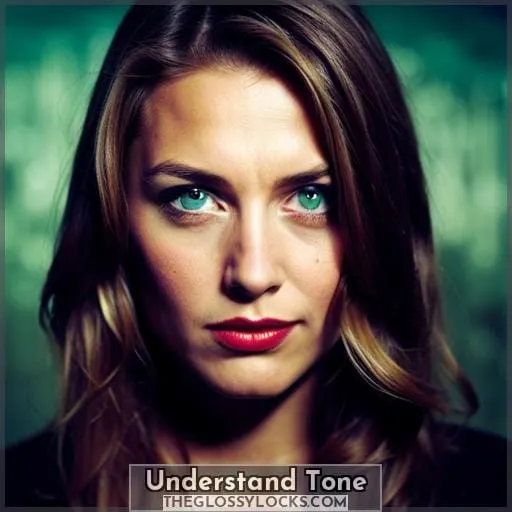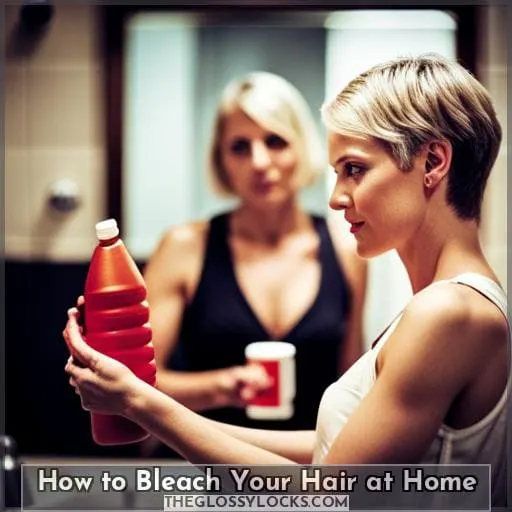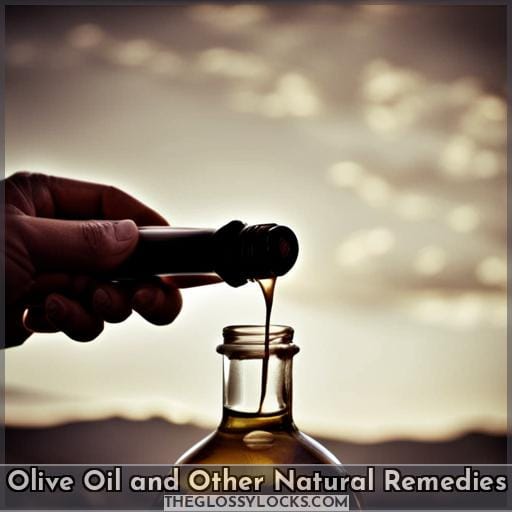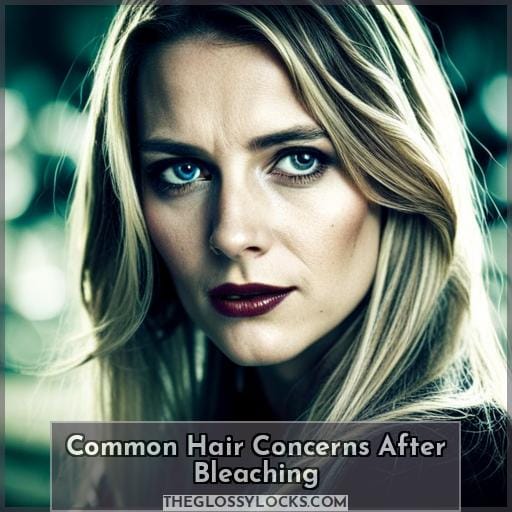This site is supported by our readers. We may earn a commission, at no cost to you, if you purchase through links.
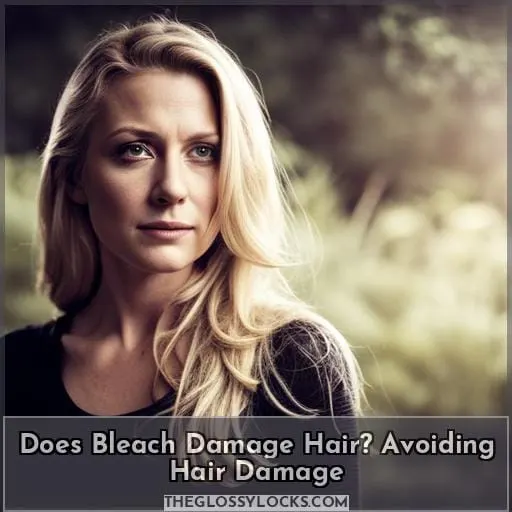 Ready to transform your hair? Discover the truth about bleach and its potential damage on your precious locks. You may be surprised to learn that bleaching doesn’t have to spell disaster for your hair.
Ready to transform your hair? Discover the truth about bleach and its potential damage on your precious locks. You may be surprised to learn that bleaching doesn’t have to spell disaster for your hair.
With the right knowledge and precautions, you can avoid damaging effects while achieving stunning results.
Dive into this article as we delve into the risks, research, timelines, supplies needed, and essential tips for protecting and caring for bleached hair.
Table Of Contents
- Key Takeaways
- Recognize the Risks
- Do Your Research
- Understand Your Timeline
- Understand Your Hair’s Levels
- Understand Tone
- Supplies You’ll Need
- How to Bleach Your Hair at Home
- Post-care
- Olive Oil and Other Natural Remedies
- Common Hair Concerns After Bleaching
- Frequently Asked Questions (FAQs)
- How long does it take for hair to recover between bleach sessions?
- What are some common hair concerns after bleaching?
- Can I use olive oil or other natural remedies to repair bleached hair?
- What are the supplies needed for toning hair silver?
- Are there any risks or side effects associated with using hair bleach?
- Conclusion
Key Takeaways
- Bleaching can melt hair if misused and cause frizz, dryness, breakage, and damage to hair bonds.
- Patience is key when transitioning from dark hair to silver, as it can take weeks to months.
- Understanding your hair’s level and tone is essential for achieving desired results with bleach.
- Post-care, such as regular trims, deep conditioning, and bond repairing treatments, is crucial to maintain the health of bleached hair.
Recognize the Risks
To avoid potential damage, it’s important for you to recognize the risks associated with bleaching your hair.
Bleaching can melt hair if misused and cause frizz, dryness, breakage, and damage to hair bonds.
It’s essential to understand that bleach is a powerful chemical that can weaken your hair by breaking apart its proteins.
Trained professionals are skilled at minimizing bleach damage through proper application techniques and using the right products.
Before attempting to bleach your own hair at home, extensive research is necessary in order to understand the process properly.
Online sources such as Pinterest, Reddit, and YouTube can provide valuable information about different bleaching techniques; however they can’t replace professional expertise or knowledge of colorists who’ve an in-depth understanding of how different types of bleach work on various types of hair.
Do Your Research
Researching before bleaching your hair is crucial to ensure you’re well-informed and prepared for the process.
- Seek professional help: Consult with a hairstylist or colorist who specializes in hair bleach, as they’ve the knowledge and expertise to guide you through the process safely.
- Understand the level system: The level system categorizes hair color on a scale from 1 (black) to 10 (pale yellow). Knowing your current hair level is essential for achieving desired results with bleach.
- Use purple shampoo: Purple shampoo helps combat brassiness and maintain cool tones in bleached hair. Look for products specifically designed for colored or bleached hair.
- Prioritize daily deep conditioning: Bleaching can leave your strands dry and prone to breakage, so incorporating daily deep conditioning into your routine is vital.
Understand Your Timeline
As you continue your journey of understanding the risks and preparing to bleach your hair, it’s important to have a clear understanding of the timeline involved in achieving your desired results.
Patience is key during this process as transitioning from dark hair to silver can take weeks to months. It’s crucial to give your hair time to recover between bleach sessions, allowing it room for repair and minimizing damage.
Be prepared for transitional phases as the color lightens, keeping in mind that achieving silver hair typically requires lifting the hair level up to 9 or 10 through bleaching.
Once you’ve reached the desired level of lightness, toning becomes an essential step in achieving that cool silver hue. Using purple shampoo can help maintain those cool tones while combating any brassiness that may occur over time.
Throughout this entire process, be mindful of potential side effects such as increased porosity and sensitization due to bleaching. Proper maintenance and care are necessary after completing each stage – deep conditioning treatments should be incorporated into a regular routine along with post-bleach bond repairing treatments.
In conclusion, understanding and accepting the timeline involved when bleaching your hair will allow you better manage expectations during each phase; ensuring proper patience throughout transition periods while maintaining healthy-looking silver locks.
Understand Your Hair’s Levels
Now that you have a good understanding of the timeline involved in bleaching your hair, it’s time to delve into another crucial aspect: understanding your hair’s levels.
When it comes to achieving the desired lightness and tone after bleaching, knowing where your starting point is on the level scale is essential.
Hair levels range from 1 (black) to 10 (pale yellow), with each number representing a different shade of color. The higher the level, the lighter and more blonde-like your hair will appear. To achieve silver or platinum tones, you typically need to lift your hair to at least level 9 or 10.
Keep in mind that there’s a slight difference between level 10 and level 11 – while both are considered very light blondes, reaching an even paler shade requires additional lifting and toning steps.
To properly assess which bleach developer strength suits you best based on these levels as well as determine appropriate toner types for achieving specific shades like silver or champagne blonde; consult professional advice if needed.
With numerous options available such as Schwarzkopf Blondme, Wella Professionals Blondor, and Redken Flash Lift, it helps consider reputable brands when selecting bleach products suited for different needs.
Use this knowledge about various levels alongside recommended products by experts within industry standards, to ensure successful results while minimizing potential damage caused during process.
Understand Tone
To achieve the desired hair color after bleaching, it’s important to understand the concept of tone.
Tone refers to the underlying colors that contribute to your overall hair color. When bleaching, you may encounter unwanted brassiness or yellow tones in your hair.
Toning involves using products like purple shampoo or toner to counteract these undesired tones and achieve a more desirable shade. Purple shampoo helps neutralize brassy yellows, while toners can be customized based on your specific needs.
It’s important not to confuse toning with other processes like color correction or highlighting. Toning specifically targets correcting unwanted undertones in already lightened hair.
When choosing a toner, consider factors such as your current level of lightness and desired end result. Consult with a professional if you’re unsure about which product will work best for you.
The frequency of toning will depend on how quickly your hair develops brassy tones again over time but typically ranges from every few weeks for platinum blondes and silver-haired individuals up to once every two months for those who want maintenance without drastic changes.
Incorporating regular use of hydrating products such as oils and conditioners can also help maintain healthy-looking toned locks.
Supplies You’ll Need
To successfully bleach your hair while minimizing damage, you’ll need to gather the right supplies.
This includes essential items for bleaching such as:
- Bleach
- Peroxide developer
- A mixing bowl
- Applicator brush
- Gloves
Additionally, you’ll need supplies for toning your hair silver like:
- A silver toner
- Peroxide developer
Strengthening and aftercare are also important considerations with products like protein treatments and deep conditioning masks being essential to maintain the health of your newly bleached hair.
Supplies for Bleaching
To bleach your hair at home, you’ll need to gather the necessary supplies.
- Bleach
- Peroxide developer (preferably 10 volumes for less damage)
- A plastic mixing bowl
- An applicator brush
- Rubber gloves
Some recommended bleaches are Schwarzkopf Blondme and Wella Professionals Blondor.
Don’t forget to have purple shampoo on hand to combat brassiness and maintain cool tones.
Daily deep conditioning with a hair mask is also essential for post-bleaching care along with bond repairing treatments for stronger strands.
Lastly, don’t neglect root bleaching and regular maintenance for long-term hair health.
Supplies for Toning Your Hair Silver
To achieve silver hair, you’ll need a few essential supplies for toning your hair:
- Toners for level 10 hair: Choose toners specifically formulated to work on level 10 (pale yellow) bleached hair. These toners help neutralize any remaining brassy or yellow tones and create the desired silver hue.
- Purple shampoo for silver hair: Incorporate purple shampoo into your routine to maintain the vibrancy of your silver color by counteracting any brassiness that may develop over time.
- Mixing ratio for toner and developer: Follow the instructions provided with your chosen toner and developer to ensure the correct mixing ratio is achieved, as it can vary depending on the product used.
It’s important to note that maintaining healthy, strong strands is crucial when aiming for a beautiful silver look. Consider incorporating bond repairing treatments into your post-bleaching routine to strengthen and repair damaged bonds in the hair structure.
Additionally, regular root touch-ups are necessary every 4-6 weeks to prevent extensive damage from overgrown roots while keeping up with consistent results in achieving long-term stunning silver locks.
Supplies for Strengthening and Aftercare
To properly care for your hair after bleaching, you’ll need a few essential supplies to strengthen and nourish your strands.
- Consider using Olaplex or K18 bond repairing treatments to restore protein bonds in your hair.
- Use a peptide masque like the one from K18 for deep conditioning and moisture.
- Purple shampoo can help combat brassiness, while regular trimmings will prevent further damage from damaged ends.
How to Bleach Your Hair at Home
To bleach your hair at home, you’ll need the necessary supplies and follow a step-by-step process to ensure successful results.
- Hair bleach: Choose a high-quality hair bleach suitable for your hair type.
- Peroxide developer (20 vol): Use 20 volume peroxide developer for less damage.
- Plastic mixing bowl and applicator brush: These tools will help you apply the bleach evenly.
-
Prepare your hair:
- Start with unwashed, dry hair as natural oils can protect your scalp from irritation.
-
Mix and apply the bleach:
- Follow instructions on the packaging to mix the correct ratio of bleach powder and developer in a plastic bowl.
- Section off your hair using clips or ties, then use an applicator brush to apply the mixture evenly from roots to ends.
Post-care
After bleaching your hair, it’s important to:
- Schedule regular trimmings to remove any damaged ends and maintain the health of your hair.
- Deep condition daily to help keep your hair hydrated and prevent further damage.
- Use weekly bond repairing treatments to strengthen and repair any broken bonds in your hair.
- Keep consistent with root bleaching to maintain long-term silver hair.
Schedule Regular Trimmings
To maintain the health of your bleached hair, it’s important to schedule regular trimmings.
Trimming split ends helps prevent further damage and breakage.
Additionally, using bond repairing treatments can strengthen your hair and protect against over-processing.
Remember to also use purple shampoo to avoid heat styling damage.
Deep Condition Daily
To maintain the health and vitality of your bleached hair, it’s essential to deep condition daily.
Deep conditioning helps restore moisture, strengthen strands, and repair damage caused by bleach.
Consider using a weekly overnight deep conditioning treatment with a heat protectant or protein treatment for optimal results.
Use Weekly Bond Repairing Treatments
To maintain the health of your bleached hair, it’s essential to incorporate weekly bond repairing treatments into your post-care routine.
These treatments help prevent excessive shedding, protect from UV damage, and strengthen damaged bonds.
Additionally, remember to trim split ends regularly and use purple shampoo for maintaining color vibrancy.
Keep Consistent and Bleach Roots
To maintain the health of your bleached hair, it’s important to stay consistent and continue bleaching your roots regularly. Committing to regular root touch-ups helps prevent uneven color growth and maintains a cohesive look.
Remember to use a gentle shampoo, avoid over-processing with heat styling, and protect your hair from the sun.
Tips for Consistent Root Bleaching:
- Schedule regular root touch-ups every 4-6 weeks.
- Use bleach specifically formulated for roots.
- Follow proper application techniques to ensure even coverage.
Olive Oil and Other Natural Remedies
If you’re looking for natural remedies to help minimize the damage caused by bleach, olive oil is a great option.
- Olive oil is known for its moisturizing properties and can help replenish lost moisture in bleached hair.
- Another natural remedy that can soothe the scalp and reduce irritation is aloe vera.
- Aloe vera has cooling properties that can provide relief from any discomfort caused by the bleaching process.
- If you’re looking to restore protein in your hair, using an egg as a mask can be beneficial because eggs are rich in protein.
- Additionally, bananas are excellent for conditioning damaged hair due to their high potassium content and ability to soften strands.
- Lastly, apple cider vinegar works wonders as a clarifying agent after bleaching because it helps remove product buildup and residue on the scalp while balancing pH levels of your hair follicles.
Common Hair Concerns After Bleaching
After bleaching, you may experience common hair concerns such as dryness and breakage.
Bleaching can strip the hair of its natural oils, leaving it dry and brittle. This dryness can make the hair more prone to breakage and split ends. Additionally, bleaching can weaken the structure of the hair strands, leading to increased fragility and potential for breakage.
Another common concern after bleaching is frizzy hair. The process of bleach opens up the cuticles of your strands, making them more susceptible to humidity in the environment which causes frizz.
Hair loss is also a possible issue that some individuals may experience after bleaching their hair. While not everyone will experience significant or permanent loss from bleach alone, but if combined with other factors like improper care or excessive heat styling it could lead to further damage resulting in thinning or even bald patches.
To minimize these concerns after bleaching your hair, there are several steps you should take:
First, ensure proper hydration by using moisturizing shampoos, conditioners, and deep conditioning treatments regularly.
Second, avoid excessive heat styling tools like flat irons and blow-dryers. Keep use at a minimum.
Third, trim regularly. Trims help remove damaged ends and prevent further splitting.
Lastly, apply protective serums and leave-in conditioners. These products reduce friction caused by brushing and combing while adding moisture and shine, overall maintaining healthier-looking locks.
Frequently Asked Questions (FAQs)
How long does it take for hair to recover between bleach sessions?
Hair typically needs time to recover between bleach sessions, and this can vary depending on individual factors such as hair health and the intensity of the previous bleach session. It’s recommended to wait at least a few weeks before bleaching again to minimize damage.
What are some common hair concerns after bleaching?
After bleaching, common hair concerns include:
- Dryness
- Frizz
- Breakage
- Loss of shine
Proper care with moisturizing treatments and heat protection can help address these issues and maintain the health of your bleached hair.
Can I use olive oil or other natural remedies to repair bleached hair?
While natural remedies like olive oil may provide temporary hydration, they can’t fully repair the damage caused by bleaching. Professional hair treatments and products specifically designed for bond repair are more effective in restoring and strengthening bleached hair.
What are the supplies needed for toning hair silver?
To achieve silver hair, you’ll need supplies such as:
- Silver toner
- Peroxide developer (10 or 20 vol)
- A plastic mixing bowl
- An applicator brush
- A shower cap
Follow the instructions of your chosen products for best results.
Are there any risks or side effects associated with using hair bleach?
When using hair bleach, it’s important to be aware of potential risks and side effects.
These can include:
- Damage to the hair shaft
- Increased dryness and frizz
- Even the possibility of melting the hair if misused.
Conclusion
To answer the burning question, does bleach damage your hair? The truth is, yes, bleach can potentially damage your hair. However, with the right precautions and aftercare, you can minimize the risks and achieve beautiful results.
Understanding your hair’s levels and tone, as well as using the necessary supplies and techniques, is key to avoiding damage. Remember to schedule regular trimmings, deep condition daily, and use bond repairing treatments to keep your locks healthy and strong.
So go ahead, transform your hair and rock a stunning new look while keeping it healthy and vibrant.

